Forever and a Day
Brief Synopsis
Cast & Crew
René Clair
George Kirby
Doreen Munroe
May Beatty
Connie Leon
Joy Harrington
Film Details
Technical Specs

Synopsis
During World War II, American reporter Gates Trimble Pomfret is about to leave London for home when he receives a cable from his father in New York, instructing him to sell the ancestral house and acquire the Trimble portrait. Following his father's orders, Gates proceeds to the house at 6 Pomfret Street. As he knocks at the door, German bombs begin to fall and he takes shelter in the cellar of the house. There he sees a plaque proclaiming that Eustace Trimble built the house. After the bombing ends, Gates returns upstairs and meets Lesley Trimble, the current occupant of the house. Lesley resents Gates's blatant disrespect for the old house and after telling him to discuss the sale with her solicitor, she climbs up the stairs, leaving him behind. After Gates follows her and apologizes for his insensitivity, she explains that she was born in the house when it was a hotel, and later she and her mother lovingly restored the edifice to its original purpose as a single family residence. After admonishing Gates to respect the memories of those that lived in the house, Lesley recounts the history of the dwelling: In 1804, Admiral Eustace Trimble buys an empty plot of land five miles from London. When the house is completed, he proudly displays it to his son Bill, noting the plaque he has installed in the cellar. During a raging storm one night, a woman collapses, exhausted, at the Trimble doorway. Later that evening, two men come looking for her, stating that she is Susan Trenchard, the ward of Ambrose Pomfret, who has betrothed her to William Barstow, one of the men who has come to claim her. Taking an instant dislike to the men, Bill refuses to let them see Susan, and Mrs. Trimble banishes them from her house at gunpoint. Soon after, Pomfret comes to claim his ward, and Susan announces that she is planning to marry Bill, thus freeing her from Pomfret's dictates. To Susan's surprise, Bill accepts her offhanded proposal and soon after their wedding, he is called to fight in the Napoleonic Wars. Susan gives birth to a son on the day that word arrives of Napoleon's defeat at Trafalger. The good news is followed by bad, however, when the family is notified that Bill has died in battle. As Susan's son grows to maturity, the family suffers financial setbacks and Pomfret buys the Trimble house out of vindictiveness. He never feels comfortable in the house, however, and one night, when he hears the voice of Admiral Trimble reclaiming his residence, Pomfret slashes the Admiral's portrait and the next morning is found dead. When Gates interrupts Lesley's story by asking if there were any good Pomfrets, she tells him about Dexter Pomfret, an iron manufacturer and amateur lepidopterist. One day, Mildred Trimble, the Admiral's great granddaughter, appears at the Pomfret house to buy back her great grandfather's portrait. Neither Mildred nor the portrait leave the house, however, because Mildred and Dexter marry. After Mildred suggests that Dexter build iron bathtubs, his business soars, raising the family to prominence. Dexter's son Anthony is knighted and Anthony's children, reared with great wealth and pretentions, lose touch with their heritage. Jim Trimble, a humble coal delivery man, retains his pride in the house that Eustace Trimble, his kinsman, built, however. When Jim decides to sail to America to start a new life, he asks Jenny Jones, the Pomfret's maid, to join him and she accepts. After the death of Lord and Lady Trimble- Pomfret, their son Augustus, who has moved to New York, puts the house up for sale. In 1917, the structure is called Trimble Hall and serves as a hotel run by Mrs. Ismay and her daughter Marjorie. On the night before Nan and Henry Barringer's son, Captain Archibald Barringer, a decorated war hero, is to return home and visit them at the hotel, Ned Trimble, an American soldier, arrives at the hotel, anxious to spend his twenty-four hour leave in his ancestral home. When Archie is delayed, the Barringers invite Ned to their table for dinner, and as Mrs. Barringer speaks fondly of her son, a telegram arrives, announcing his death. After Mrs. Barringer retires to her room to be alone, Mr. Barringer insists that Ned and Marjorie join him for dinner and together they solemnly toast Archie. After dinner, Marjorie gives Ned a tour of the hotel, ending in the cellar, where Ned sees Eustace's plaque. The next morning, Ned proposes to Marjorie and the two are wed before he returns to duty. When the armistice is declared, Marjorie retreats to the cellar and remembers Ned's endearments to her. Returning to the present, Lesley continues that she and her mother, Marjorie, restored the hotel with money left by her father. As Gates muses about how each generation of Trimbles and Pomfrets seems to find their way to the house, the bombs begin to fall once more. As soon as Lesley and Gates take shelter in the cellar, a direct hit by a bomb demolishes the house but leaves the cellar intact. After the bombing ceases, Gates and Lesley inspect the ruins of the house. When they find the portrait of the Admiral still hanging, Gates suggests that they rebuild the house because so many memories still live there.

Directors
René Clair

Edmund Goulding

Cedric Hardwicke
Frank Lloyd
Victor Saville

Robert Stevenson

Herbert Wilcox
Cast
George Kirby
Doreen Munroe
May Beatty
Connie Leon
Joy Harrington

Kent Smith
Ernest Grooney

Reginald Gardiner

Victor Mclaglen

Billy Bevan

Arthur Treacher
Harry Allen
Aubrey Mather
Ethel Griffies
June Lockhart
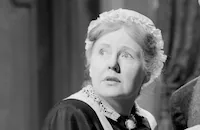
Barbara Everest
Stuart Robertson
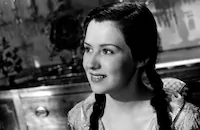
Ruth Warrick

Herbert Marshall

Charles Irwin
Gerald Oliver Smith

C. Aubrey Smith

Edmund Gwenn
Lumsden Hare

Ray Milland

Dame May Whitty

Gene Lockhart
Ben Webster

Anna Neagle
Claud Allister
Alan Edmiston

Doris Lloyd
Helena Pickard

Claude Rains

Halliwell Hobbes
Clifford Severn
Alec Craig

Jessie Matthews

Reginald Owen
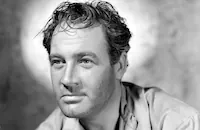
Ian Hunter
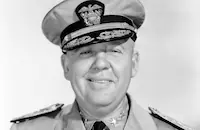
Charles Laughton

Sir Cedric Hardwicke

Anna Lee

Buster Keaton

Montague Love

Edward Everett Horton
Daphne Moore
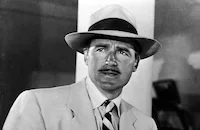
Patric Knowles

June Duprez

Cecil Kellaway

Isobel Elsom

Ida Lupino

Wendy Barrie
Wendell Hulett

Queenie Leonard

Eric Blore
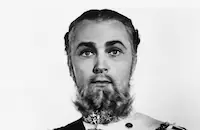
Brian Aherne

Merle Oberon

Walter Kingsford
Dennis Hoey
Emily Fitzroy

Una O'connor

Richard Haydn
Odette Myrtil
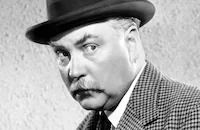
Nigel Bruce

Elsa Lanchester
June

Ivan Simpson

Robert Coote
Anita Bolster

Roland Young

Gladys Cooper
Pax Walker
Marta Gale
Arthur Mulliner
Jean Prescott

Robert Cummings
Clyde Cook
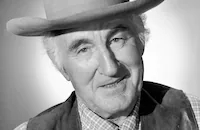
Donald Crisp
Mary Gordon
Crew
Charles Bennett
Alan Campbell
Claude Carpenter
Anthony Collins
Norman Corwin
George Crone
Albert S. D'agostino
Robert De Grasse
Bailey Fesler
C. S. Forester
Lee Garmes
Peter Godfrey
John Grubb
Jack Hartfield
Lawrence Hazard
Al Herman
S. M. Herzig
James Hilton
Michael Hogan
Christopher Isherwood
Emmet Lavery
W. P. Lipscomb
Gene Lockhart
Frederick Lonsdale
Russell Metty
Alice Duer Miller
Nicholas Musuraca
Walter Plunkett
C. S. Ramsay-hill
Renie
Lloyd Richards
R. C. Sherriff
Darrell Silvera
Edward Stevenson
Donald Ogden Stewart
Douglas Travers
John Tribby
John Van Druten
Richard Van Hessen
Vernon L. Walker
Claudine West
Elmo Williams
Lawrence P. Williams
Keith Winter
Earl Wolcott

Film Details
Technical Specs

Articles
Ruth Warrick (1915-2005) - Ruth Warrick, (1915-2005)
She was born on June 29, 1915 in St. Joseph, Missouri. After attaining a degree in theatre from the University of Kansas City, she left for New York, where in 1938, she joined the Mercury Theater troupe, headed by a young artist on the rise by the name of Orson Welles. When Welles prepared to film Citizen Kane (1941) he took several players from his Mercury Theater (Joseph Cotten, Everett Sloan, Agnes Moorehead) and of course, Ruth Warrick. She made her film debut in Welles' cinematic epic as Emily Norton Kane. Indeed, to many film buffs, Warrick's icy charms are indispensable to the celebrated montage sequence opposite Welles at the breakfast table; particularly when he broaches the subject of her husband's infidelity:
Emily Kane: Charles, people will think...
Charles Kane: What I tell them to think!
Warrick received fine reviews for her performance, and she had good roles in her next two films The Corsican Brothers (1941), with Douglas Fairbanks Jr., and Journey Into Fear (1942), opposite Joseph Cotton. Sadly, Hollywood, not knowing what to do with a well-trained, mature actress like Warrick, began to cast her into routine, forgettable fare: Mr. Winkle Goes to War (1944), China Sky (1945), and Swell Guy (1946). Disney's Song of the South (1947), was a box-office hit, and was her best film in a while, but overall, the material she received over the next few years, simply wasn't worthy of her talents.
Things turned around for her in the mid-50s, when Warrick discovered the medium of television. She had regular roles on The Guiding Light (1953-54), As the World Turns (1956-60), Father of the Bride (1960-61), and was unforgettable as the sinister housekeeper, Hannah Cord, in Peyton Place (1965-67). Yet it was her 35-year run in the role of Phoebe Wallingford in All My Children (1970-2005), that Warrick achieved her greatest triumph. As the rich, intrusive matriarch of the fictitious, affluent town known as Pine Valley, Warrick found a role that could be at once gloriously hammy and quietly conniving - qualities that highlighted her renown versatility as an actress. To honor her contribution to television, Warrick received a lifetime achievement award from the Daytime Emmys last December. She is survived by three children, a grandson, and six great-grandchildren.
by Michael T. Toole

Ruth Warrick (1915-2005) - Ruth Warrick, (1915-2005)
Quotes
Trivia
'Alfred Hitchcock' prepared the sequence involving Ida Lupino, and was to have directed it; scheduling prevented him, and it was directed by Rene Clair, who used Hitchcock's script.
Notes
The working title of this film was This Changing World. The opening credits are presented by an offscreen narrator's voice speaking over an image of St. Paul's Cathedral. The narrator explains: "St. Paul's Cathedral, London...That's right...Happily still standing after so much that has taken place in recent years. And to many of us, it's a symbol of something that will surely survive any other trials that May yet be in store. This May be the reason why a number of people banded themselves together to make this picture possible. In order of their appearance, these are the players who took part. Many others offered their services, but could not eventually appear through no fault of their own. The main point was the eagerness of everyone to take part in a job of real teamwork..." The narration is followed by a list of actors in order of their appearance. The name of Sir Cedric Hardwicke, who appeared before Anna Lee and after Charles Laughton, is omitted from this list, however. His name is included in the end credits, which are not as all-inclusive as the opening credits. Doreen Munroe's name is misspelled as "Monroe" in the onscreen credits. The narrator then continues: "Of course, it takes more than actors to make a picture, and we were fortunate in being able to make use of many offers of assistance... among them, these writers..." This is followed by a list of the film's writers. The narrator continues: "Also these directors and producers contributed their time and skill." A list of the film's directors follows. The narrator then concludes:"[their cooperation] symbolizes the common efforts of ourselves and our allies to make secure the ideals for which the picture stands."
According to materials in the production file on the film in the AMPAS Library, this picture was based on an idea by Hardwicke. According to a May 1941 New York Times, however, article, the film was originally conceived by a group of British and French nationals living in Hollywood as a way to raise money for war refugees. After the collapse of France, the British writers and actors decided to carry on with the project. A Hollywood Reporter news item adds that the production was halted for rewrites in September 1942 after America's entry into the war. The Motion Picture Herald review notes that the players, writers and directors worked without pay and that RKO distributed the film at cost. The profits were distributed to British and American charities connected to the United Nations war effort. According to a September 21, 1942 item in Hollywood Reporter, Frank Lloyd directed the London blitz sequences that open and close the film. A production still for the film revealed that Charles Coburn appeared in a scene with Claude Rains, however Coburn was not in the released film. A November 1941 Hollywood Reporter news item adds that Edmund Goulding directed the sequence in which "the Ismays" are running the Trimble house as a hotel. In his biography, Herbert Wilcox stated that he directed the sequence depicting the building of the Trimble house and the meeting between "Bill" and "Lesley." This marked British actress Jessie Matthews' sole appearance in an American film. According to modern sources, Ray Bolger [who was not identified in the viewed print] played a sentry in the film and René Clair replaced Alfred Hitchcock as one of the directors.














